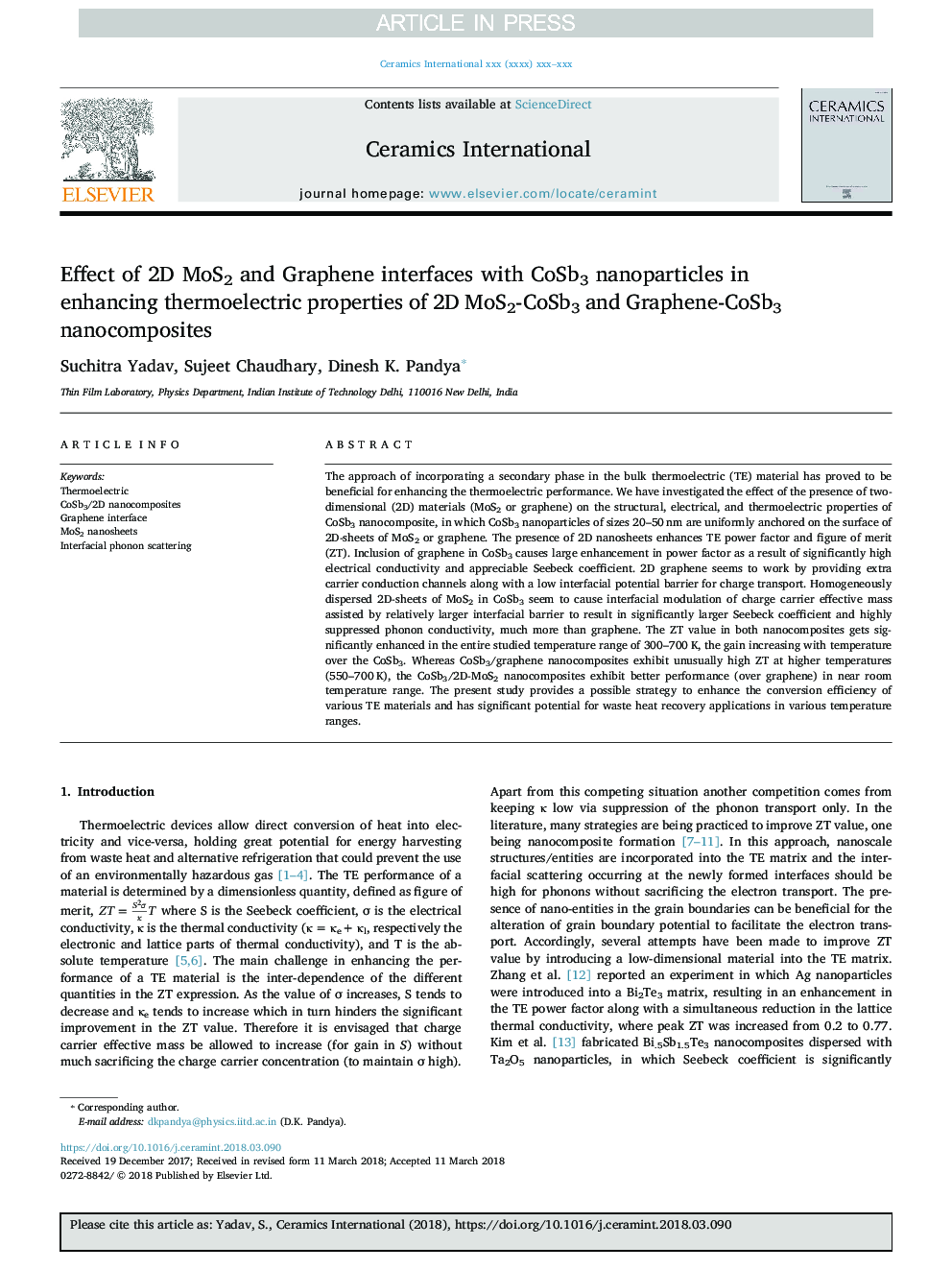| کد مقاله | کد نشریه | سال انتشار | مقاله انگلیسی | نسخه تمام متن |
|---|---|---|---|---|
| 7887268 | 1509789 | 2018 | 7 صفحه PDF | دانلود رایگان |
عنوان انگلیسی مقاله ISI
Effect of 2D MoS2 and Graphene interfaces with CoSb3 nanoparticles in enhancing thermoelectric properties of 2D MoS2-CoSb3 and Graphene-CoSb3 nanocomposites
دانلود مقاله + سفارش ترجمه
دانلود مقاله ISI انگلیسی
رایگان برای ایرانیان
موضوعات مرتبط
مهندسی و علوم پایه
مهندسی مواد
سرامیک و کامپوزیت
پیش نمایش صفحه اول مقاله

چکیده انگلیسی
The approach of incorporating a secondary phase in the bulk thermoelectric (TE) material has proved to be beneficial for enhancing the thermoelectric performance. We have investigated the effect of the presence of two-dimensional (2D) materials (MoS2 or graphene) on the structural, electrical, and thermoelectric properties of CoSb3 nanocomposite, in which CoSb3 nanoparticles of sizes 20-50â¯nm are uniformly anchored on the surface of 2D-sheets of MoS2 or graphene. The presence of 2D nanosheets enhances TE power factor and figure of merit (ZT). Inclusion of graphene in CoSb3 causes large enhancement in power factor as a result of significantly high electrical conductivity and appreciable Seebeck coefficient. 2D graphene seems to work by providing extra carrier conduction channels along with a low interfacial potential barrier for charge transport. Homogeneously dispersed 2D-sheets of MoS2 in CoSb3 seem to cause interfacial modulation of charge carrier effective mass assisted by relatively larger interfacial barrier to result in significantly larger Seebeck coefficient and highly suppressed phonon conductivity, much more than graphene. The ZT value in both nanocomposites gets significantly enhanced in the entire studied temperature range of 300-700â¯K, the gain increasing with temperature over the CoSb3. Whereas CoSb3/graphene nanocomposites exhibit unusually high ZT at higher temperatures (550-700â¯K), the CoSb3/2D-MoS2 nanocomposites exhibit better performance (over graphene) in near room temperature range. The present study provides a possible strategy to enhance the conversion efficiency of various TE materials and has significant potential for waste heat recovery applications in various temperature ranges.
ناشر
Database: Elsevier - ScienceDirect (ساینس دایرکت)
Journal: Ceramics International - Volume 44, Issue 9, 15 June 2018, Pages 10628-10634
Journal: Ceramics International - Volume 44, Issue 9, 15 June 2018, Pages 10628-10634
نویسندگان
Suchitra Yadav, Sujeet Chaudhary, Dinesh K. Pandya,